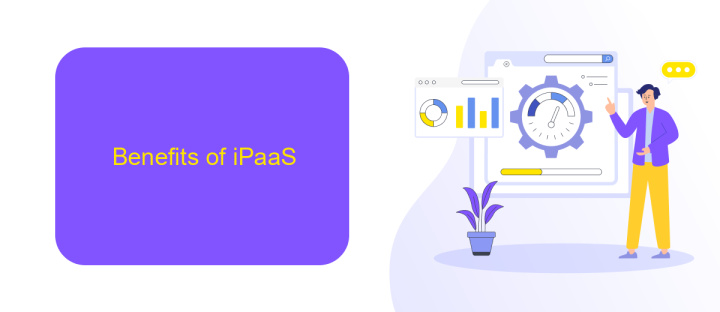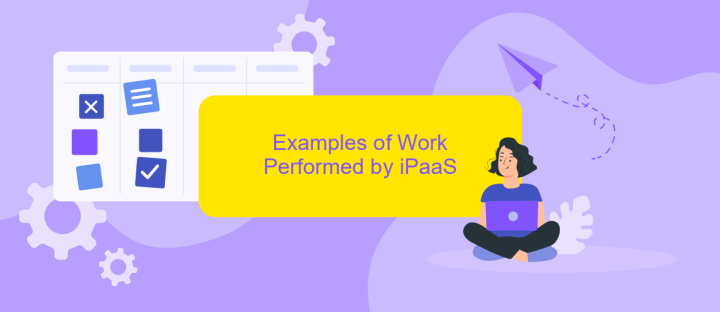Example of Work Performed by iPaaS
In today's rapidly evolving digital landscape, businesses require seamless integration of various applications and data sources to stay competitive. Integration Platform as a Service (iPaaS) offers a robust solution for these needs, enabling efficient data flow and connectivity across diverse systems. This article explores exemplary use cases and the transformative impact of iPaaS on modern business operations.
Introduction
In today's fast-paced digital landscape, businesses are increasingly relying on Integration Platform as a Service (iPaaS) solutions to streamline their operations and enhance productivity. iPaaS provides a seamless way to connect different applications and data sources, allowing organizations to automate workflows and improve data accuracy.
- Automated data synchronization between disparate systems
- Real-time data integration for timely decision-making
- Scalable solutions to accommodate growing business needs
- User-friendly interfaces for easy configuration and management
One such iPaaS solution is ApiX-Drive, which offers a robust platform for integrating various applications without the need for coding expertise. By leveraging ApiX-Drive, businesses can set up integrations quickly, ensuring that their systems work harmoniously together. This not only reduces manual effort but also minimizes the risk of errors, thereby enhancing overall operational efficiency.
Benefits of iPaaS

iPaaS (Integration Platform as a Service) offers numerous benefits that streamline business operations and enhance efficiency. One of the primary advantages is its ability to seamlessly integrate disparate systems, applications, and data sources, enabling organizations to automate workflows and reduce manual intervention. This leads to significant time savings and reduces the likelihood of human error. Additionally, iPaaS solutions like ApiX-Drive facilitate easy setup and management of integrations, allowing even non-technical users to connect various services without extensive coding knowledge.
Another significant benefit of iPaaS is its scalability. As businesses grow, their integration needs often become more complex. iPaaS platforms can easily scale to accommodate increased data volumes and more intricate workflows, ensuring that the integration processes remain smooth and efficient. Furthermore, iPaaS provides real-time data synchronization, which is crucial for maintaining up-to-date information across all connected systems. This real-time capability ensures that decision-makers have access to the most current data, improving overall business agility and responsiveness.
Examples of Work Performed by iPaaS

Integration Platform as a Service (iPaaS) offers a comprehensive solution for connecting disparate systems and automating workflows. By leveraging iPaaS, organizations can streamline their operations and improve data accuracy across various applications.
Examples of work performed by iPaaS include:
- Automating data synchronization between CRM and ERP systems to ensure consistency and reduce manual data entry.
- Enabling real-time data analytics by integrating data from multiple sources into a centralized data warehouse.
- Facilitating seamless e-commerce operations by connecting online stores with inventory management and shipping systems.
- Enhancing customer support by integrating helpdesk software with communication tools like email and chat platforms.
- Streamlining marketing campaigns by syncing data between marketing automation tools and social media platforms.
Services like ApiX-Drive make it easier to set up these integrations without requiring extensive coding knowledge. By using ApiX-Drive, businesses can quickly connect various applications, automate workflows, and focus on their core activities. This not only saves time but also ensures that data flows smoothly across all systems, enhancing overall efficiency.
How to Implement iPaaS

Implementing iPaaS (Integration Platform as a Service) can streamline your business processes by seamlessly connecting various applications. The first step involves identifying the specific requirements and goals of your integration. This will help in selecting the right iPaaS solution that fits your needs.
Once you have chosen an iPaaS provider, such as ApiX-Drive, you need to set up your account and configure the necessary settings. ApiX-Drive offers a user-friendly interface that simplifies the integration process, allowing you to connect different applications without extensive technical knowledge.
- Identify your integration needs
- Select an iPaaS provider like ApiX-Drive
- Set up your account and configure settings
- Connect your applications via the iPaaS platform
- Test the integrations to ensure they work seamlessly
After configuring and testing your integrations, it's crucial to monitor their performance regularly. ApiX-Drive provides real-time analytics and monitoring tools to help you track the efficiency of your integrations. By following these steps, you can successfully implement iPaaS and improve your business operations.
Conclusion
In conclusion, the implementation of iPaaS solutions has revolutionized the way businesses manage and integrate their various applications and data sources. By streamlining workflows and automating complex processes, iPaaS platforms like ApiX-Drive enable organizations to achieve greater efficiency and agility. These tools not only reduce the time and effort required for integration tasks but also minimize the risk of errors, ensuring more reliable and consistent data flow across systems.
Moreover, the flexibility and scalability offered by iPaaS platforms make them an ideal choice for businesses of all sizes, from startups to large enterprises. As companies continue to adopt and rely on a diverse array of cloud-based and on-premises applications, the role of iPaaS in simplifying and optimizing these integrations will only become more critical. ApiX-Drive, with its user-friendly interface and robust functionality, exemplifies the potential of iPaaS to transform business operations and drive growth in an increasingly interconnected digital landscape.
FAQ
What is iPaaS?
How does iPaaS work?
What are the common use cases for iPaaS?
How can iPaaS improve business efficiency?
What are the key features to look for in an iPaaS solution?
Time is the most valuable resource in today's business realities. By eliminating the routine from work processes, you will get more opportunities to implement the most daring plans and ideas. Choose – you can continue to waste time, money and nerves on inefficient solutions, or you can use ApiX-Drive, automating work processes and achieving results with minimal investment of money, effort and human resources.

